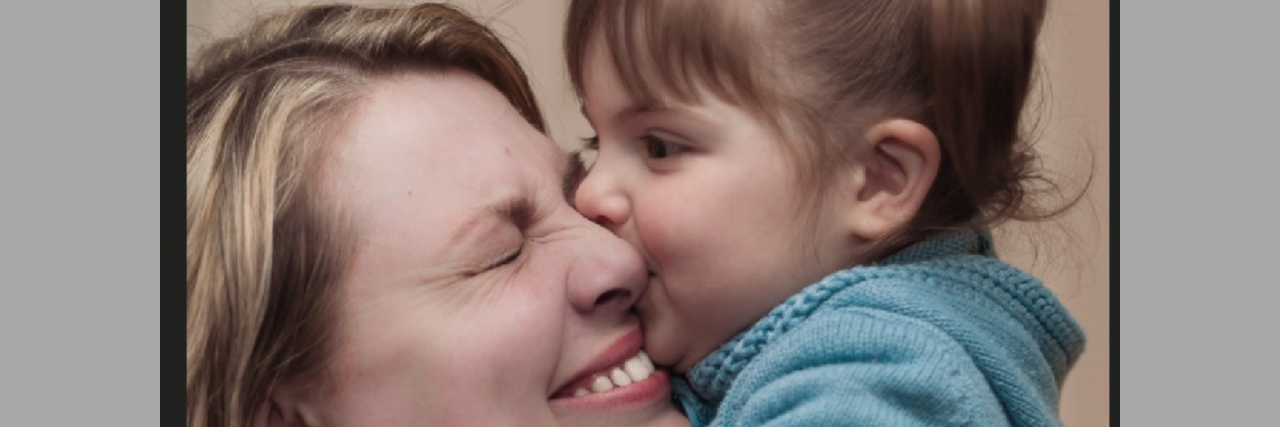It is unacceptably difficult to get an accurate diagnosis for autistic girls, especially when they happen to be of average intelligence or higher and can speak.
Don’t take my word for it. The research tells the tale: in young children, only one girl is diagnosed for every 5.5 boys. By adolescence, it’s 2.3 boys for every one girl. By adulthood, the prevalence is 1.8 to one.
Wow.
We were there all along and yet we fell through the cracks. Given the lack of resources, it’s not that surprising.
There are few professionals who understand that autism is often expressed in different ways by the female phenotype — few know that beneath the thin veneer of academic ability and advanced vocabulary, there is often a young girl who struggles to understand what is expected of her, and who struggles with anxiety, sensory issues, life skills, and social and communication skills.
Why are we being missed?
Researchers have some ideas: girls mask their symptoms and imitate others, have areas of interests and talents that aren’t so different from typical peers, see value in learning social expectations, and can often be very social. For clinicians who don’t know the questions to ask and the areas to probe, this means the autistic girl goes unidentified and spends much or all of their growing-up years struggling to find her way.
The value of an accurate diagnosis cannot be dismissed. These girls often do get diagnosed, but with anything but autism: social anxiety, general anxiety disorder, depression, anorexia, borderline personality disorder, oppositional defiant disorder, ADHD, learning disabilities, or poor parenting. Let’s not forget the unkind characterizations of lazy, drama queens, aggressive, unstable, immature, arrogant.
These nasty comments add insult to injury. How about if we start accurately identifying our unique learners, and then helping both teachers and parents to understand approaches that can be most effective in teaching academic, social understanding and life skills.
As we wait for our societies around the world to catch up to our understanding of the female phenotype, it may fall to parents to help their professionals to consider autism as they seek answers for their child. The following is a brief list of traits and tendencies that are seen in some girls with autism. Yes, these are just anecdotal, and certainly can apply to boys as well. This is in no way a comprehensive list — I could have added dozens more.
I am not a doctor (or any other kind of diagnostician), I am an autistic advocate whose special interest is autism, and I am sharing what I have learned.
Please remember that autism is different for everyone. It is, after all, just another way of being human — a unique way of learning and experiencing the sensory world.
Once we understand that and what it means for our child, there is the potential for everything gets easier.
1.
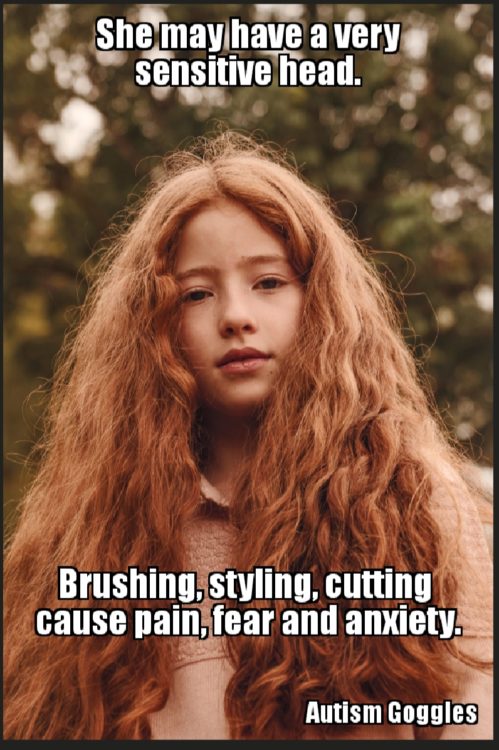
Ninety percent or more of autistic people may have sensory differences that are the cause of, or contribute to, their behaviours and emotional responses. It is so important to have a thorough understanding of just how much our sensory experiences impact our experience of the world. Without this knowledge, every day is all about coping with expectations that are beyond our ability to manage. It can leave us on the edge of fight, flight or freeze at all times — and make us shut down or meltdown as we get overloaded with stress hormones. Oh yeah — and in pain. When we are over-reactive, even self-care and grooming can be painful.
2.
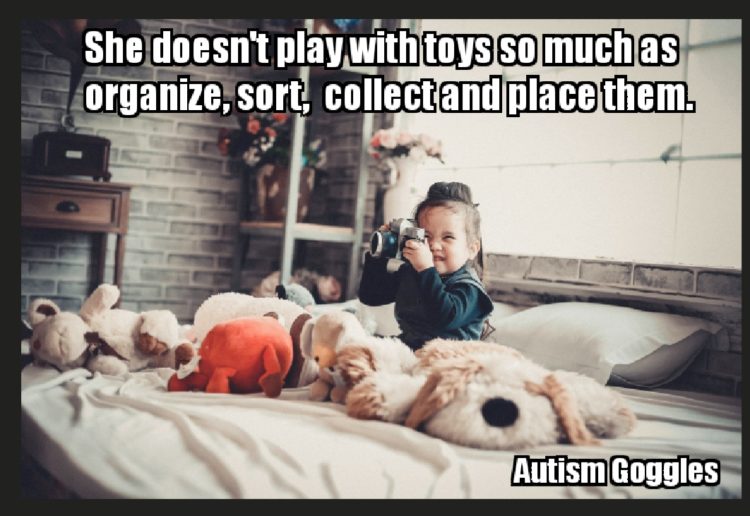
Yep. We collect dolls, stuffies, Archie comics, celebrity pics, stuffed animals… and I’m betting some of you autistic mommas collected (and may still have) Beanie Babies.
3.
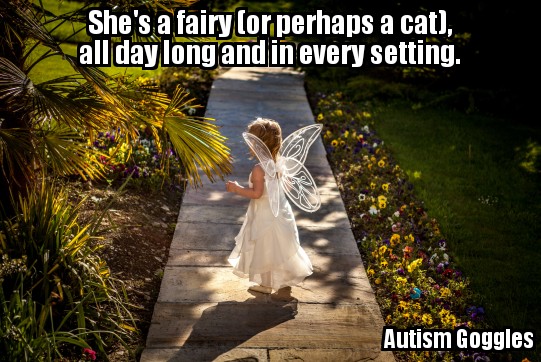
I’ve met many little girls who will tell you they are fairies, and wear their wings and fairy dresses every day. I’ve met others who walk around on all fours whenever they are at home, because — meow — that’s how cats get around. They may even lap their food out of a bowl. They are cats all day long.
4.
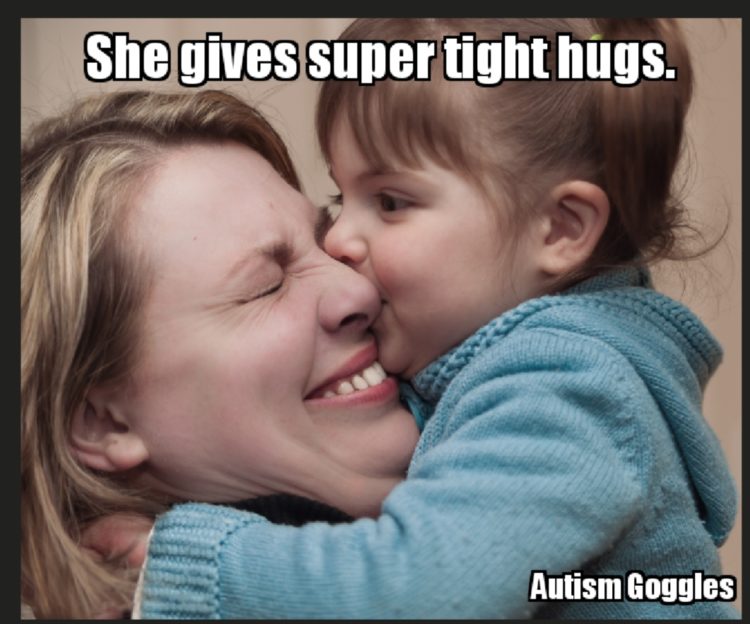
Common experiences in autism — our children may give tight hugs, side hugs, or no hugs at all. If your child gives verrrry firm, tight hugs, it might be one example of a sensory processing difference.
5.
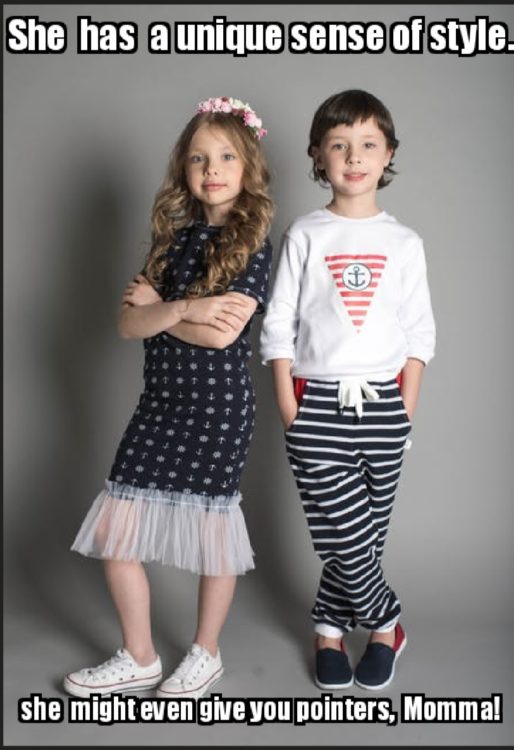
Oh ya! Autistic girls are either uber cool and artsy in their fashion sense or totally indifferent and confused by the fixation people have about what they wear. For the latter, girls may dress in clothing not suitable for the weather or the occasion long after their peers have figured this out. Some girls don’t want to dress in stereotypical “girly” clothes, and are androgynous in their look or decisively “boyish.” This is 2019. We should understand and accept these differences and let our children be who they are and wear what they want.
6.
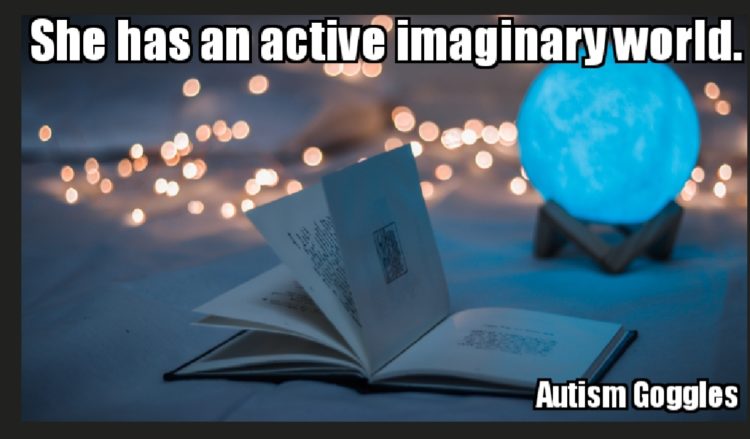
Autistic girls often love Harry Potter and other series with magical, mythical or alien worlds. She may have an imaginary friend that you need to say good night to at bedtime.
7.
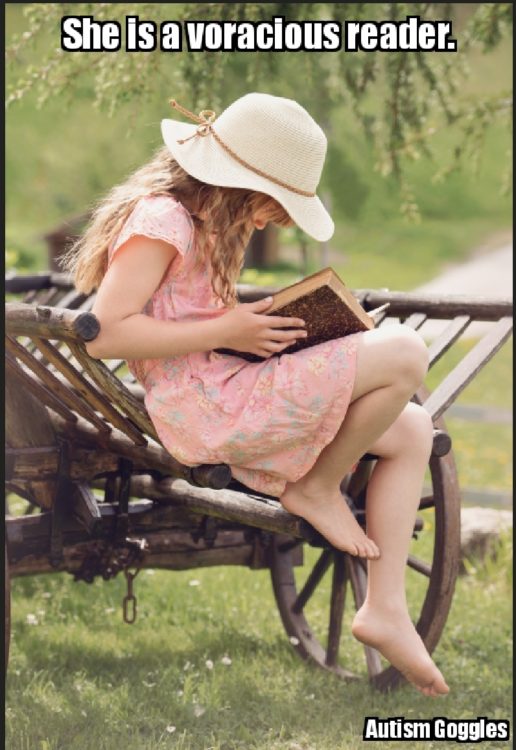
Many autistic girls immerse themselves in reading. The imaginary worlds are less confusing than the ones we are expected to navigate. The heavenly combination of alone time and the quiet solitude of reading make it a great way to decompress from the demands of the day.
8.
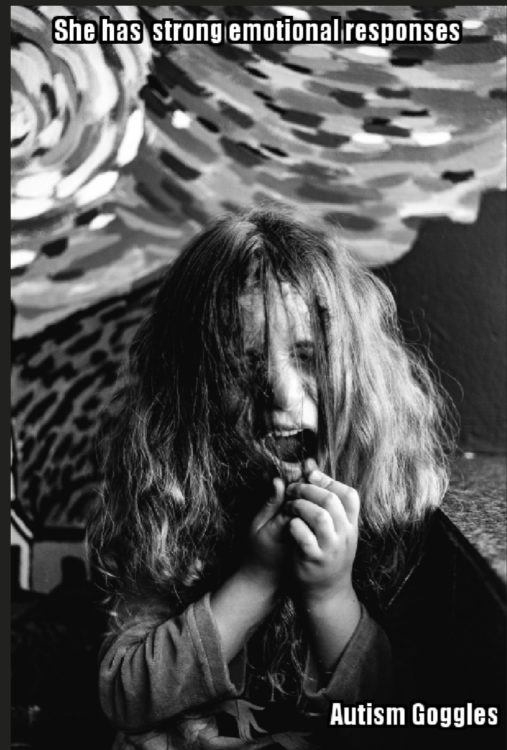
Autistic girls may feel the emotions of others and have deep emotional empathy. Emotional empathy is there, but the cognitive empathy — knowing what to do with what she is feeling — well, that may need to be taught. When overwhelmed by demands, or anxious, or excited, they may not be able to inhibit their distress. Girls with autism, like boys, benefit from being taught how to recognize feelings in their body, then learning what they can do in response to those feelings. In the meantime, and without a concerted effort to teach these skills, girls continue to be unfairly labelled as drama queens, out-of-control, unstable, difficult or aggressive.
9.
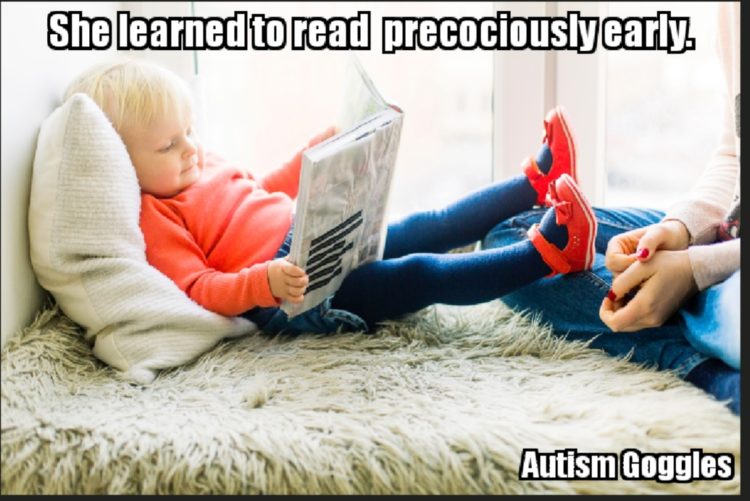
Many bright, verbal autistic girls picked up reading very young and very easily. Some are self-taught — hyperlexic.
10.
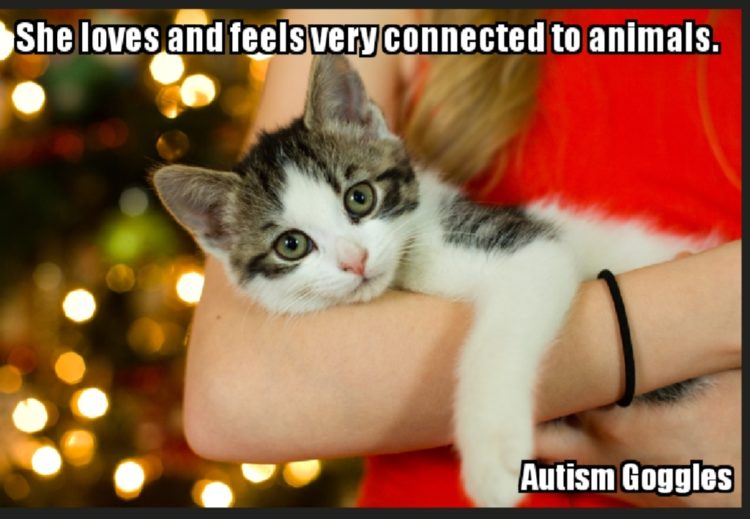
Many girls will tell you their cat or dog was their best friend in childhood. Animals love you unconditionally, and it’s so darn relaxing to snuggle up with and pet.
11.

She may choose her best teddy bear buddy, or may line up all her stuffed toys to read a book aloud.
12.
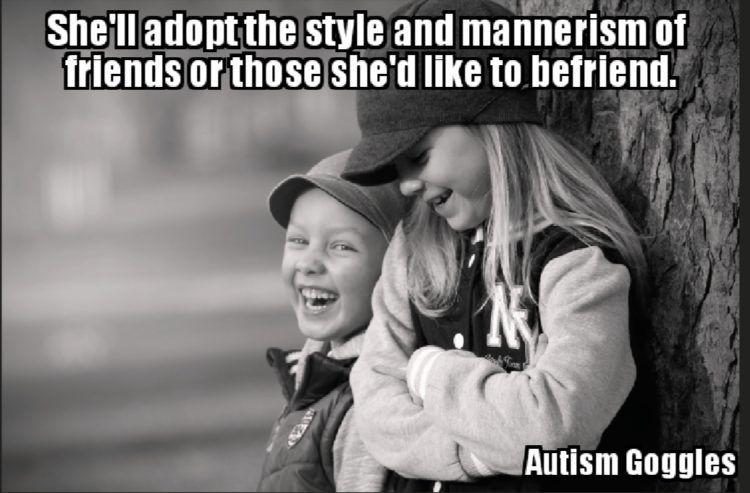
This is one of the ways autistic girls may hide their social confusion. We may hone in on a cool kid, dress like her, pick up her expressions, her likes and her dislikes. Basically, we grow up “acting” all day long, always feeling out of sync, never feeling accepted. We learn to imitate in order to fit in. Professionals miss this all the time –neven though our tendency to imitate is well-documented.
13.
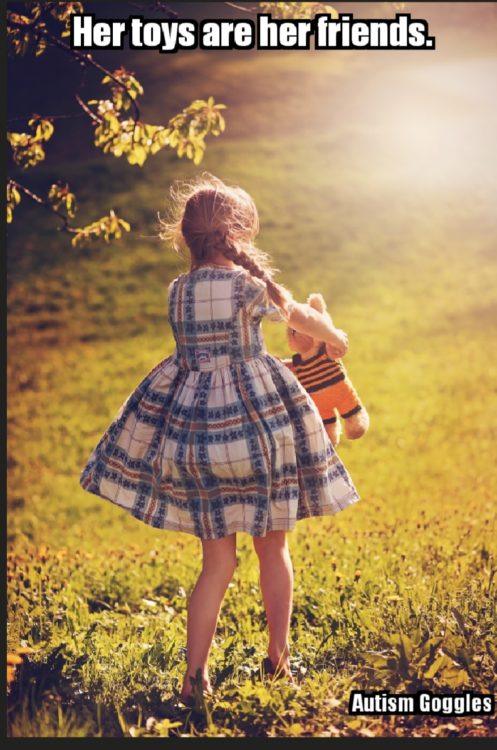
Autistic girls may talk to and play with some of their toys as though they are her friends.
14.
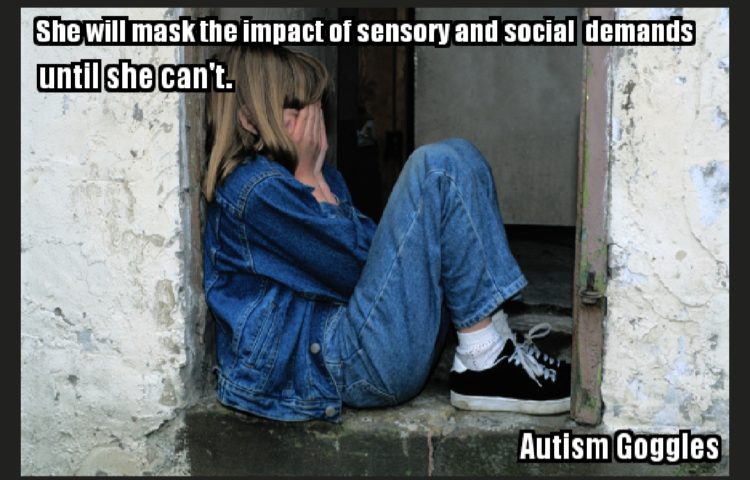
The social and sensory demands, along with the speed and volume of school work, can be too much for our girls to cope with. The do their best to mask the mounting distress all day long, acting as if everything is fine — even saying so if asked. However, like a soda pop that has been shaken and then opened, there’s an enormous build-up of pressure that is released. She might cry inconsolably, shut down, or lash out the minute she gets home.
15.
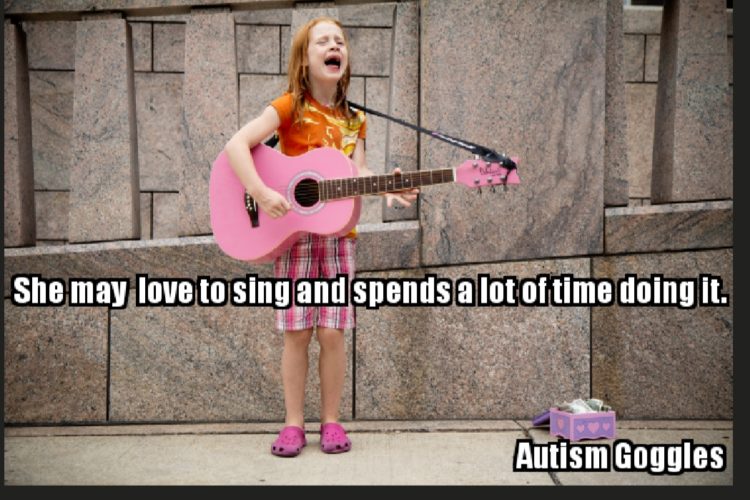
I have a very special someone in my life who has been singing her heart out since before she could talk. Girls with autism can have talent in many areas–art, writing, technology, crafts–but many have notable skill and interest in music or learning new languages.
16.
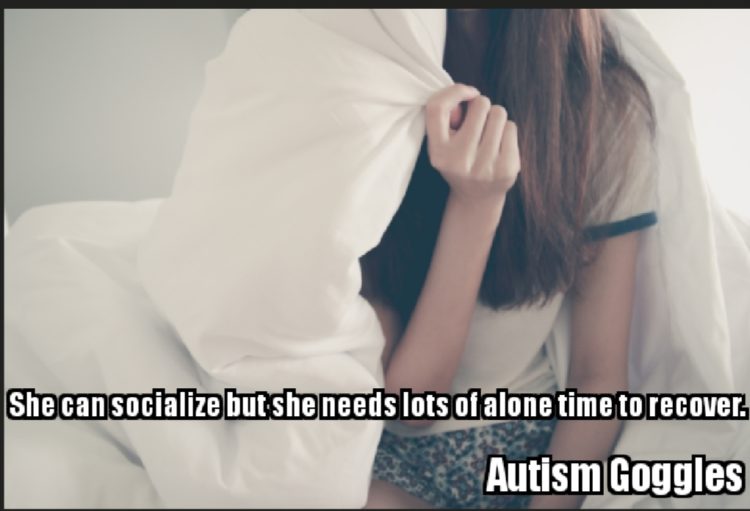
Autistic girls may appear to manage just fine through the school day or when attending a social event, but the emotional and physical cost can be huge. In order to recharge, an autistic girl might seek the solitude of her room and be unable to socialize with anyone for a period of time. She may spend hours drawing, listening to music, watching YouTube videos, or sleeping–anything but interacting with other people.

